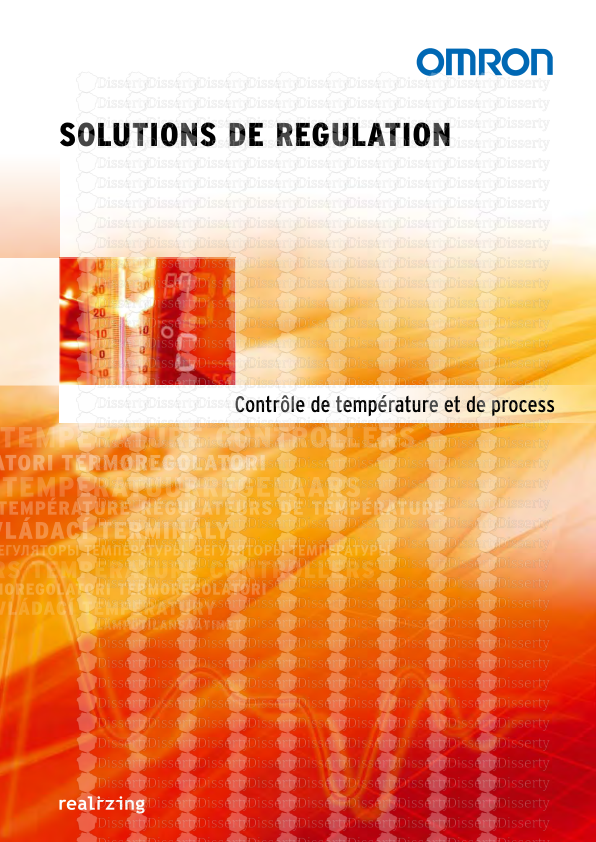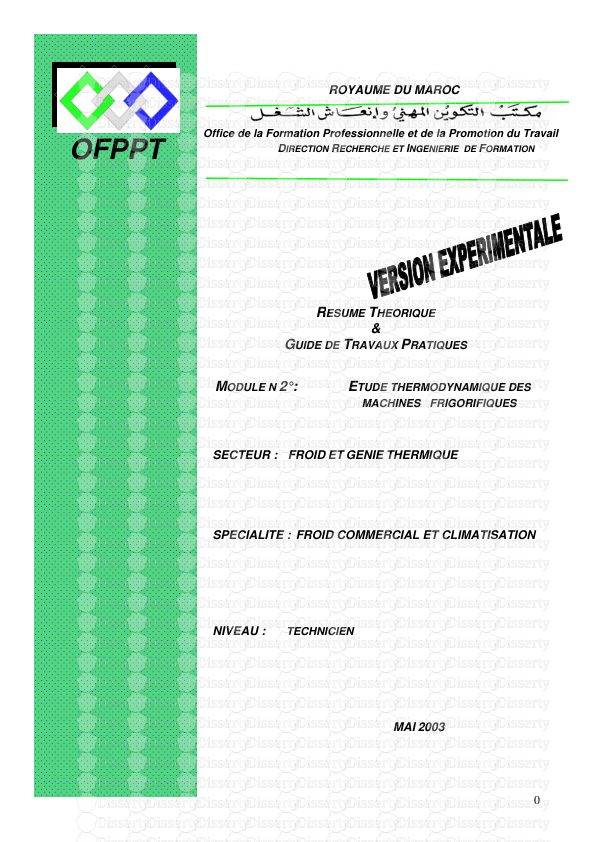Instrumentation, Mesure, Métrologie – n° 2/2018, 315-329 Experimental analysis
Instrumentation, Mesure, Métrologie – n° 2/2018, 315-329 Experimental analysis to predict the performance of a plate fin heat exchanger at cryogenics temperature Ajay K. Gupta, Manoj kumar*, Debashis Panda, Ranjit K. Sahoo Cryogenics Engineering Laboratory, Department of Mechanical Engineering, NIT Rourkela 769008, India manoj526beg@hotmail.com ABSTRACT. The objective of this study is to provide experimental data that could be used to predict the effectiveness and performance of a plate fin heat exchange for low-temperature conditions. In this study, plate-fin heat exchangers are tested with a variation of the mass flow rate. Such heat exchangers have high fin density and offer narrow passages for the fluid flow, which often leads to a significant pressure drop. An experimental setup is made in the laboratory to test the plate fin heat exchanger at cryogenic temperature. In this setup, compressed nitrogen gas will be passed through the plate-fin heat exchanger as a hot stream. The hot stream gas will be passed through a liquid nitrogen coil heat exchanger to cool the high-pressure gas. The cold gas is then passed as a reverse stream of the plate fin heat exchanger. The experimental setup is mounted to the measurement instrument like RTDs, Pressure gauge, Differential pressure gauge, Orifice plate flow meter, etc. The effectiveness of heat exchange will be calculated from the measured temperatures directly from the experiment. Also, the temperature drop will be obtained from the analyses. The effectiveness and temperature drop data are also obtained through numerical analysis and validate it with experimental results. RÉSUMÉ. L'objectif de cette étude est de fournir des données expérimentales qui pourraient être utilisées pour prédire l'efficacité et la performance d'un échange de chaleur à ailettes de plaque dans des conditions de basse température. Dans cette étude, les échangeurs de chaleur à ailettes de plaque sont testés avec une variation du débit massique. De tels échangeurs de chaleur ont une densité d'ailettes élevée et offrent des passages étroits pour le flux de fluide, ce qui entraîne souvent une chute de pression importante. Une configuration expérimentale est réalisée en laboratoire pour tester l’échangeur de chaleur à ailettes de plaque à température cryogénique. Dans cette configuration, l'azote gazeux comprimé passera à travers l'échangeur de chaleur à ailettes de plaque sous forme de flux chaud. Le flux de gaz chaud passera à travers un échangeur thermique à serpentin d'azote liquide pour refroidir le gaz à haute pression. Le gaz froid est ensuite transmis en tant que flux inverse de l’échangeur de chaleur à ailettes de plaque. Le dispositif expérimental est monté sur l’instrument de mesure, comme les sondes RTD, le manomètre, le manomètre différentiel, le débitmètre à plaque à orifice, etc. L'efficacité de l'échange thermique sera calculée à partir des températures mesurées en provenance de l'expérience directement. En outre, la chute de 316 I2M. Volume 17 – n° 2/2018 température sera obtenue à partir des analyses. Les données d'efficacité et de chute de température sont également obtenues par analyse numérique et validées à l'aide de résultats expérimentaux. KEYWORDS: plate-fin heat exchanger, aspen, experimental study. MOTS-CLÉS: échangeur de chaleur à ailettes de plaque, aspen, étude expérimentale. DOI:10.3166/I2M.17.315-329 © 2018 Lavoisier 1. Introduction The heat exchangers are widely used in various field such as aerospace, automobile, electronics cooling devices, etc. Shah and Sekulic (2003) presented a classification of the heat exchangers taking in several aspects mainly divided into regenerative and recuperative. A contextual background including design and its application of regenerator that used mostly for small equipment like pulse tube cryocoolers in cryogenics are described by Ackermann (2013). In a regenerator, fluid streams are passing through the heat exchanger surfaces one after the other by absorbing and releasing energy separately whereas in a recuperator energy is exchanged at the same time through a parting sheet. In cryogenics, a variety of heat exchanger is used as explained in (Barron and Nellis, 2016), since it requires highly efficient heat exchanger for liquefaction of gases. Many researchers (Barron, 1985; Atrey, 1998; Kanoglu et al., 2008) investigated its sensitiveness for the production of liquefaction of gases; Barron reported that no liquefaction is obtained if the effectiveness of heat exchanger is lower than 85%. The study of the process of heat transfer in the heat exchanger and its design methods have been explained critically by various authors and scholars (Kern and Kraus, 1972; Kays and London, 1984; Ozisik, 1985; Frass, 1989 ; Shah, 1999 ; Vance et al., 1963 ; Kakac et al., 2002 ; Mikheyey, 1968). Based on design criteria on spacing or say compactness, the compact heat exchanger is one of the best types of heat exchanger. A compact heat exchanger confirms greater than 700 m2/m3 of heat transfer area density. Therefore, the size is an essential factor in a specific application where the size and weight is a significant constraint which is defined by Shah. He also including characteristics and its classification in their reports. Hesselgreaves et al. (2016) stated the different forms of compact heat exchanger employed for industrial uses. A general idea of fins in the heat exchanger for an automobile as well as in air conditioning system developed by Cowell and Achaichia (1997) and Webb (1998). Li et al. (2011) reports the different types of compact heat exchanger like plate heat exchanger, printed circuit Heat exchanger, plate fin heat exchanger, spiral heat exchanger, Marbond heat exchanger, ceramic heat exchanger, etc. However, for large equipment high compactness, multifluid flow plate fin heat exchanger provides the best result amongst other (Linde; Crawford and Eschenbrenner, 1972; Finn et al.,1999). As it is a multi-streams, many streams can be accommodated within a one compact heat exchanger unit. Consequently, the number of the item is to reduce or remove to reduce its weight and size. The performance of a plate fin heat exchanger 317 The high-quality work on compact heat exchanger was reported by A.L.London (1984). He has also co-authored in a monograph with W.M.Kays and R.K.Shah and London (1978). Earlier in 1940 Kays (1948) carried out experimental works on heat exchangers and explained the test method for heat transfer and fluid flow characteristics. The literary work of Kays and London was adopted by various researchers. Even Kays and London also followed their developed data in their further studies on correlations and other related experiments. Various authors have reflected on the design and development of PFHX by considering the material selection to shape, size, weight and surface design (Lenfestey, 1961; Lenfeste). Hesselgreaves proposed one of the important procedure for selection, design and operational process. In 1961, Lenfestey (1961) presented a review of the design method and the construction processes of the low- temperature heat exchanger. Later on, Lenfestey (1968) in 1968 added up further details in the following publication and proposed advanced heat exchanger. The material employed for plate fin heat exchanger depends according to the requirement for temperature, pressure, and spacing. The temperature ranging up to 50oC; paper is used (mainly for ventilation purpose), for higher temperature up to 840 of metal is preferred, and for much higher temperature up to 1370 of ceramic materials are used. The metallic material required for plate-fin heat exchangers are aluminum, stainless steel, copper alloy, nickel alloy (Manglik et al., 2011). Recently Seara and Uhia (2013) presented PFHXmade up of titanium brazed offset fins strip. Ceramates Inc, (Cermatec) design a ceramic heat exchanger. According to Taylor, (1987) aluminum is the desired material for cryogenic applications. Sarma et al. (2017) investigated the effect of fouling factor on the thermal performance of a heat exchanger tubes. 2. Experimental setup and procedure The experimental setup comprises with counterflow offset plate fin heat exchanger as a test piece along with other components whose details are described below. The pressurized nitrogen gas from the liquid nitrogen storage tank through the vaporizer is made to pass through the plate fin heat exchanger on the high- pressure side and is chilled with the help of chiller and pass again to the low- pressure side. This session describes the major parts of the component, the arrangement of the experimental set-up and the calibration process of the apparatuses used. In this experiment, the mass flow rate for both the side is set to be the same and constant for a single set of analysis. Proper measurements of outlet and inlet temperatures and pressure are measured when flow achieves steady state. The same process is repeated for different mass flow rate. The pressurized nitrogen as a working fluid from the vaporizer is collected in the reservoir tank and made to pass. The impurities of gas affect the experimental results and increase the fouling factor, which affects the performance of the heat exchanger. Therefore, Nitrogen gas supplied to the test system is of highly pure to avoid the fouling factor. Control 318 I2M. Volume 17 – n° 2/2018 valve manages to bring the flow of nitrogen gas at different flow rates. The gas enters to the high-pressure entry side of the heat exchanger and comes out from the high-pressure exit side and then it is allowed to pass through the chiller unit. The uploads/Management/ experimental-analysis-to-predict-the-performance-of-a-plate-fin-heat-exchanger-at-cryogenics-temperature 1 .pdf
Documents similaires










-
45
-
0
-
0
Licence et utilisation
Gratuit pour un usage personnel Attribution requise- Détails
- Publié le Fev 27, 2021
- Catégorie Management
- Langue French
- Taille du fichier 0.5067MB


